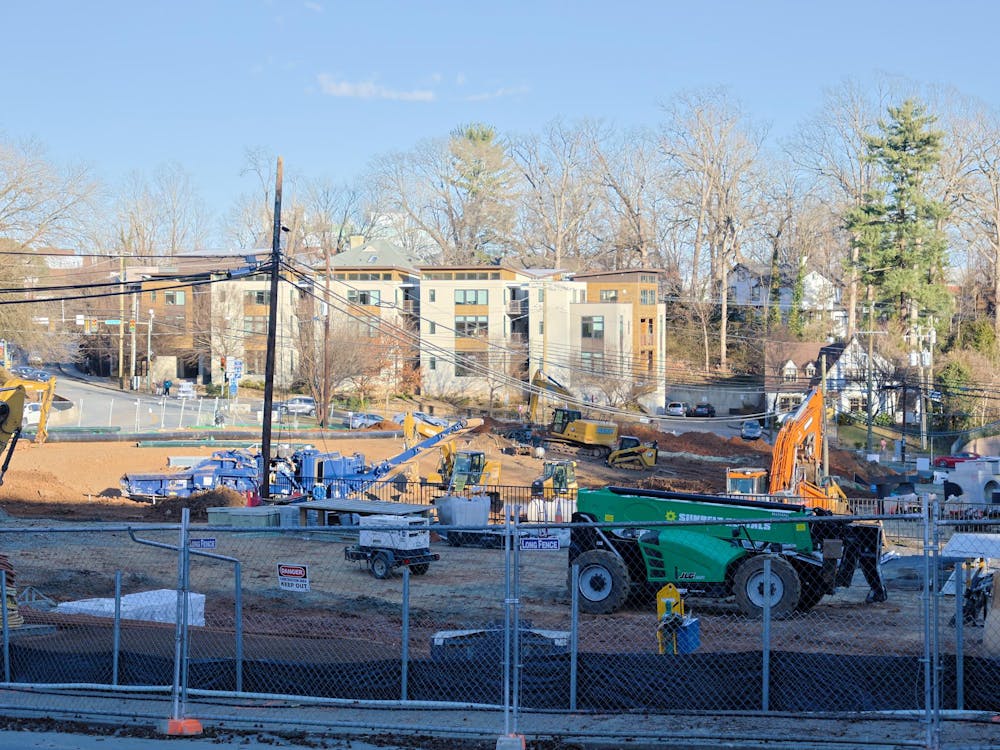WITNESSING significant change is an important part of a University's growth. We can be certain that as of this date, the face of the University is undergoing a minor makeover, as many of the structural changes that have seemingly sprouted from the ground up have taken shape over the past couple of months. Commissions, planners and architects have spent years on envisioning a map for our newly designed University, weighing the options of traditional Jeffersonian architecture versus more modern, eclectic drafts -- adding to what will soon become the new Grounds landscape. At present, we are witnessing the fruits of their labor, planning and design come to harvest.
When we think about the way the University looks, we shouldn't fail to notice the small achievements we've made in the vein of pedagogy as well.For instance, change has occurred in Student Council: Our school's student body president is a Korean and African-American female student in the Commerce School -- diversity in human form, if you will. During opening week, in addition to welcome receptions for African-American and Asian-American students and their parents, the LGBT Resource Center hosted a reception for gay and lesbian students and their parents just two doors down.
Change has even occurred at the administrative level, with the adoption of several diversity commissions working alongside the president, as well as the Board of Visitors -- the University's current means of communicating a commitment to diversification. Although these changes mark a significant tide towards something other than conservative classic Eurocentrism, these temporary transformations are simply that -- temporary. Our Council presidents only serve one year, resource and cultural centers need to raise money to support their activities annually and no one can be sure that anything will be made of this diversity commission's impending meetings and strategies.
In other words, there may not be anything permanent or consistent about the visible efforts to diversify the University; however, if students were wise they would see opportunity, and permanency, in the structures that have begun to block our view.
Additions to the Aquatic and Fitness Center, renovations to Observatory Hill Dining Hall and all of the new earth being dug up around Grounds signifies that the University is willing to change if the price is right. But what students often fail to realize is that their dollars and cents count just as much as alums', and sometimes even more so, as we will soon find ourselves with degrees and donations to give back to the University. The only proof by which we can tell that the University is transforming itself into a more welcoming environment for all students, faculty and for emergent academic departments, such as media studies and the arts, is by being able to eyewitness the building projects and architectural transformations on Grounds come to life. We need to see fit that our dollars are not just paying for our education, but also paying for what we want and need in our University -- and even perhaps what our children might need.
Thus far, the University is definitely onto something, but with all of the investors funneling donations into our collective bank account, there is no reason why we shouldn't see remarkable changes to the face of our campus nearly overnight. However, as the University continues in its ultimate makeover, those of us who seek to take further ownership of the University need to understand that each one of these new building projects creates a unique opportunity for the University to show their commitment to modernization, technology and diversity. The "under construction" signs that mark the University at present will only be posted for so long, and soon enough the names of new buildings and academic centers will become a part of our colloquial language -- and perhaps the names of these places will be as significant as what these buildings look like. The University can show commitment in several ways, but it should be important to see whether or not they will observe the true builders of this University, display some recognition to the community surrounding the University, adopt a namesake and rectify some of the past.
Beyond what we can currently see in the pedestrian bridge over Emmet Street, the newly built parking garage and the beginnings of the John Paul Jones basketball arena in the same vicinity, students should expect to see the framework for a new performing arts center which will clearly establish the connection between North and Central Grounds. The expansion of the Arts Grounds sector -- a new studio art building, library and museum, outdoor theatre, as well as expansions to the drama building and Campbell Hall -- should signify the University's newfound commitment to the fine arts, and perhaps the center will define a new era in the University's appeal to student artists.
Besides that, students will bear witness to Rouss Hall's expansion and the move of the Commerce School, a new Materials Research Science building in the Engineering school complex, University Hospital's expansion, several new research and special collections libraries, and the highly-touted South Lawn Project, the new home of much of the College and its departments. With all of these renovations, students should pay close attention to the land these building are being erected upon and the importance of each of these centers within the landscape of the University, as it is being altered. What should be interesting is if the University recognizes the land these buildings are being built on, and whether or not due respect will ever be paid.
(Kazz Alexander Pinkard's column appears Thursdays in The Cavalier Daily. He can be reached at kpinkard@cavalierdaily.com.)






